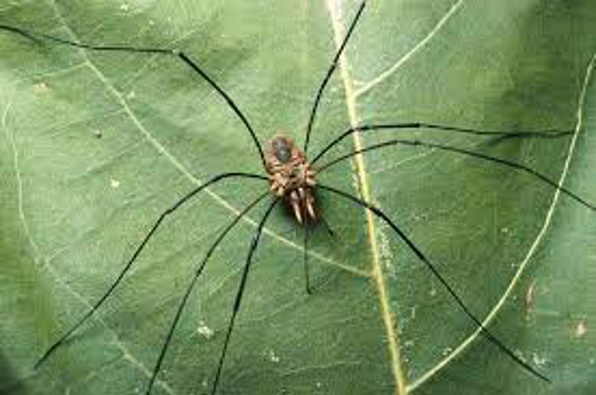Use of “common names” in the biological world is not very helpful. Scientists describe all species according to nomenclature rules whereby each organism gets a Genus name and a Species name. Blattella germanica is the German cockroach; “Blatella” is the genus name (with a capital letter) “germanica” is the species name (starting with a lower case letter).
There are other species that belong to the Genus Blattella (Blattella orientalis is a good example) and they are closely related to each other. These scientific names are accepted and adopted by all scientist in any language – there is no doubt what we are talking about – this name is connected to one species and one species only.
But I’d like to put the use of the vernacular name (common name) in a “confusion basket”: New Zealanders often ask me about Daddy Longlegs…
There are three different groups of invertebrates that are commonly called “Daddy Longlegs”
- The Pholcids: Pholcus phalangioides aka the cellar spiders; cosmopolitan and especially in sub-tropical regions of Europe, Asia and Africa – no doubt distributed with human movement. They make messy webs in houses (human-fabricated “cellars” or nice, warm caves), especially in the corners near the ceiling. They capture a wide range of flying and crawling insects and even spiders. Contrary to public myth, they will trap and kill white-tailed spiders with ease.
- Another Arachnid, distantly related to the cellar spiders, is the Harvestman, Phalangium opilio. This is the time of the year when you see them a lot in the garden, especially the vegetable garden. Harvestmen are probably so named because you see them around “harvest time”. They’re predators of a wider range of insects and other invertebrate organisms. They love caterpillars, but also the eggs of white butterflies on your newly-sown cabbages. A really characteristic feature is that harvestmen have their head, thorax and abdomen fused into one body part and the coolest thing to see is that their second pair of legs is much longer that all the other legs. They use these to find their way around your garden, not unlike a blind person with a stick.
- And then there are the Crane flies (Tipulidae). These are those large flies that often sit on a wall, sunning themselves. Some people call them “giant mosquitoes”, but they have little in common with those biting, blood-sucking insects, apart from the fact they belong to the fly Order “Diptera”. “Di” (meaning two) and ptera (wings) indicates they just have two functional wings (not four, like most winged insects). Their hind wings have been modified to small stalks with a little knob at the end. When (crane) flies fly these so-called “Halteres” gyrate to give the fly stability and control. When you see a crane fly at rest, these halteres are easily spotted.
Take your Radio, Podcasts and Music with you










